Kitchenware Retailers
How To Sell To The Time-Stressed, Time-Starved Customer
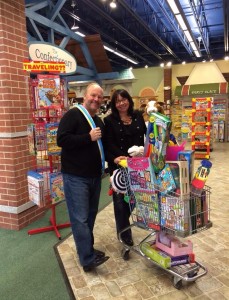 When a customer is shopping while stressed for time it is up to the retailer to be able to optimize the time they spend in the store, no matter how brief it may be. They might have just popped in on their way home from work and need to get in, pick up a tool to make dinner, and get out. If that customer walks out of the store feeling like they have met their goal, they will feel satisfied about their experience and walk away with a good impression of the business even if they were only in the store for seven minutes. To achieve this, retailers must have a layout that is well merchandised to the footprint of the store and have sales staff make contact with the customer immediately.
When a customer is shopping while stressed for time it is up to the retailer to be able to optimize the time they spend in the store, no matter how brief it may be. They might have just popped in on their way home from work and need to get in, pick up a tool to make dinner, and get out. If that customer walks out of the store feeling like they have met their goal, they will feel satisfied about their experience and walk away with a good impression of the business even if they were only in the store for seven minutes. To achieve this, retailers must have a layout that is well merchandised to the footprint of the store and have sales staff make contact with the customer immediately.
Rich Kizer and Georganne Bender, of Kizer & Bender Speaking, are self-proclaimed consumer anthropologists. They are professional speakers who specialize in retail strategies and consumer research. Their presentations to retailers at trade shows, markets, associations, and private events reflect 25 years of experience and research they have conducted through focus groups, one-on-one customer interviews, and field work that involves observing customers on the sales floor as they shop, collecting pre- and post-shopping impressions, clocking shopping times and more. They also work primarily with independent retailers directly in their stores and do sales training with store associates.
“We look for the very best, and sometimes the very worst, and try to share those experiences with people so they don’t make the same mistakes; they can take advantage of those success strategies,” says Kizer.
Kizer & Bender point to the store layout as the starting point for accommodating time-starved customers. The store must be well organized so that a shopper can easily navigate, find what it is they’re looking for and get out. Think about the layout logically, so that every fixture and display is put in a specific space for an identifiable reason, not simply because there was an open space.
For example, the first five to 15 feet inside the store, depending on the size of the sales floor, is the “Decompression Zone,” where customers are unlikely to notice merchandise, no matter how great it may be. Once a customer has moved past that decompression zone, they begin to fully take in the store. They only begin to do that once they are at least five feet inside the front door and have adjusted to the new environment. That’s when they start to notice products. Avoid placing key merchandise too close to your front entrance.
Next, 90 percent of people will walk in and first look or turn to the right. “That area has to be impeccably merchandised to get people thinking about products and categories, and garnering not just one item, but more than one,” says Bender.
With a well-merchandised layout, a good salesperson is able to easily guide a customer towards what they are looking for, while giving that salesperson the opportunity to weave a story along the way. It makes the store a bit more of a treasure hunt to the customer without a big effort.
Another aspect of the story created for customers within the store involves signage. Story Teller signs tell a customer why they should buy something. Story Tellers might read, “Imagine being able to juice whole oranges in five seconds flat!” Product Seller signs are those that provide vital information on product specifications and include a price point. For a customer who is burning time, signs are a representation of the store that can help them make speedy decisions. After all, 70 percent of purchasing decisions are made in the store, says Bender.
The other part of the equation for the time-stressed customer is the interactions they have with retail associates. Customers must be greeted immediately with a quality greeting, not just a simple “May I help you?” Kizer & Bender suggest thinking about how you would welcome a friend who arrived to your home, keeping in mind that the customer relationship starts as soon as they walk in the door. In conducting exit interviews with customers after following them through the store with a stopwatch, Kizer & Bender will ask how long it took for them to be greeted. If the store is not good at greeting people, the perceived time will always be greater than the actual time. They might respond that it took 10 minutes to be greeted when in reality it was only four.
“Even with the person that’s on a mission, say something other than ‘May I help you?’ That will minimize the perception inside that person’s head,” says Kizer. “A person who wants to come in and run out quickly can have an incredible experience in their mind after they leave. It was really only a transaction, but they turned it into a great experience because of the way it was handled.”
It can also be helpful to visually assess a customer by their body language upon entering the business. A shopper who is walking at a fast pace and quickly looking back and forth is sending signals that they are in a hurry. Be sure to offer help to this customer, but don’t get stuck on thinking that they are only going to be in and out – your interpretation might be wrong, or the customer might change their mind about how much time they have once they’ve received some contact and feel more at ease.
Beyond the initial greeting, staff must keep in mind at all times that the customer is the most important asset in the store. A sales associates might go back to whatever task they were doing once a customer says they do not need help, but they must keep an eye on that customer in case they decide they do have some questions.
“At some point in time you determine that you need help, you’ve been in the store for a while and nobody’s approached you, or made eye contact, or said anything to you. That’s when people become stressed out and they start to think negative things about your store,” says Bender. “It’s one of those things that people turn on in a second, but we hear it over and over and over again in focus groups.”
It is especially important in the realm of kitchenwares to give customers guidance so they know and understand what their options are. Retailers and salespersons are the experts that need to impart knowledge to their customers.
“When you walk in a store you know that you want to buy a particular item, but there are 14 different ways that you can use them, so which one is right for you? That’s the key. A good salesperson can weave a story around it and say, ‘Let me show you how it works.’ … This just gives the customer confidence and, unfortunately, that’s what customers don’t get enough of when they walk into stores,” says Kizer.
It all boils down to the customer walking away feeling satisfied about their experience, no matter how much time they spend in the store. “If a customer walks in and they’re really in a hurry, they’re time starved, stressed out, thinking, ‘I need this and I need to get out of here fast,’ and they are able to do that – they’re thrilled to death. The next time they think about your store, they’re thinking about it in a positive way because they had a good experience,” says Kizer.
This story was originally published in the March 2015 issue of Kitchenware News, a publication of Oser Communications Group.
Gray Goose Cookery: Kitchen Store With a Mission
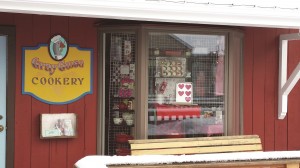 Suzanne Lane has come full circle with her weight loss journey and kitchenware store. It was the store she turned to for tools when she first began the journey to lose the 118 pounds she has lost so far. Now the journey is a main focus of the store, and she’s not done yet. At the Gray Goose Cookery in Mystic, Connecticut, Lane is not only the proprietor, she is the leading the charge for a healthy lifestyle in her community by encouraging others to learn about her journey and do the same with some help from herself and her kitchenware store.
Suzanne Lane has come full circle with her weight loss journey and kitchenware store. It was the store she turned to for tools when she first began the journey to lose the 118 pounds she has lost so far. Now the journey is a main focus of the store, and she’s not done yet. At the Gray Goose Cookery in Mystic, Connecticut, Lane is not only the proprietor, she is the leading the charge for a healthy lifestyle in her community by encouraging others to learn about her journey and do the same with some help from herself and her kitchenware store.
“Here I am in the food industry, and we always talk about food. It’s so easy to end up eating more than you should, and I put on a lot of weight over the years,” says Lane. “I decided to turn to my kitchen store and use the tools in my kitchen store to lose weight. I researched all the diets, and I created my own diet, and I did it. I followed my own diet, and I lost all this weight.”
From there, Lane had people approaching her and asking how she had done it. She followed the logical steps and decided to offer classes in her store to share her healthy-eating tips with others and The Pinch Diet was born. The premise is basic: healthy eating, exercise and just a pinch of temptation foods here and there to satisfy cravings while not giving in to them entirely.
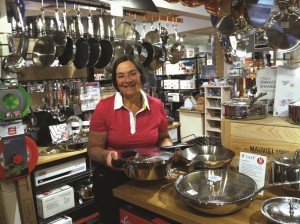 Coming from a culinary background, Lane has knowledge of food and food preparation that she is able to share with others who might be less inclined to find the joy in a salad on their own. A family of “foodies,” as she calls it, her mother and grandfather were both avid home cooks, and Lane herself managed several restaurants for two years in between her undergraduate and graduate degrees, even becoming chef within just six months.
Coming from a culinary background, Lane has knowledge of food and food preparation that she is able to share with others who might be less inclined to find the joy in a salad on their own. A family of “foodies,” as she calls it, her mother and grandfather were both avid home cooks, and Lane herself managed several restaurants for two years in between her undergraduate and graduate degrees, even becoming chef within just six months.
She eventually opened a gift store but had customers asking her to get kitchen tools for them, so a kitchenware store seemed a natural transition. She had designed a logo for her retired mother to use for a catering company that was to be called Gray Goose Catering. When that fell through and Lane was ready to open up for business, she decided to use the logo she had already personally designed, and Gray Goose Cookery was born in 1995.
The shop is 4,000 square feet located in Olde Mistick Village, a shopping district built to recall New England’s colonial era. With the Mystic Aquarium just down the road and the Mystic Seaport about a half mile away, the store sees lots of tourists coming through during the summer months and enjoys local business throughout the year.
Lane also has a gift store, Elizabeth & Harriet, and a tabletop store, Gray Goose, Too, both located in Olde Mistick Village as well. She opened up Gray Goose, Too in 2005 after finding she had run out of room at Gray Goose Cookery. She also realized that tabletop items need a different sort of display than do kitchenwares and that they attracted a different sort of customer — one who tends to set the table rather than cook the food. In Mystic, the leisure set is big, given that the Mystic River is just right there, and folks need those entertaining pieces for their boats, poolside and al fresco dining. Gray Goose, Too is an entirely separate shop of 2,500 square feet located across the way from Gray Goose Cookery.
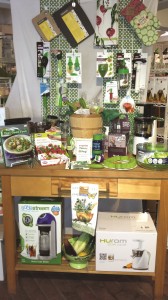 The product selection at Gray Goose Cookery is a reflection of what Mystic customers want. A combination of Baby Boomers and Millennials who are gadget-oriented with an eye on ease of use has lent itself well to the purpose of showcasing healthy eating tactics within the store.
The product selection at Gray Goose Cookery is a reflection of what Mystic customers want. A combination of Baby Boomers and Millennials who are gadget-oriented with an eye on ease of use has lent itself well to the purpose of showcasing healthy eating tactics within the store.
“Boomers and Millennials are really driving the marketplace, and that’s how we got somewhat into the healthy eating component,” says Lane. “The Millennials are coming in because we’re talking the language that they’re concerned about. They don’t want to eat all this processed food; they want to get back to the basics also.”
Whether it’s in her Pinch Diet classes or simply helping a customer in the store, Lane never misses an opportunity to share a healthy eating tidbit. If a customer is selecting an ice cream scoop, she will point out that the tool can also be used as a portion control scoop.
“Over the course of time I’ve shared what I’ve learned with my staff, and my staff has shared what I’ve passed on to them with the customers to educate the customers,” says Lane. “Our staff does add those healthy eating suggestions to people to educate our customer. Our customer needs to know more because this country is suffering from a major caloric imbalance. They’re eating more than they’re expending, so we’re trying to educate our people more and more.”
The planting of healthy eating seeds among customers combined with The Pinch Diet Classes, has over the last year and a half begun to attract people to the store specifically seeking out the advice they know they can find at Gray Goose Cookery. The classes are bringing in diabetics and pre-diabetics, folks who have been warned by their doctors that they need to make changes in their lives before their health takes an irrevocable turn. Lane recounts the story of a customer who needed to lose 10 pounds before having a knee replacement surgery. She stuck to The Pinch Diet and lost 15 pounds before her procedure, making for an easier recovery.
“I’m a figure in the community, literally and figuratively, and when they see me it’s like, ‘Wow, you look fabulous!’ So I’ve sort of become a beacon for people to come along and help themselves,” says Lane. “Now we’ve become the go-to place where they can get in touch with being healthier … even in the little ways of buying that Mastrad spiral vegetable slicer. There are little tools that can make it more interesting when you’re trying to control your weight or your caloric intake. That’s one of the key things that I’ve taught people in my classes. Life is to be lived — enjoy it and make it interesting.”
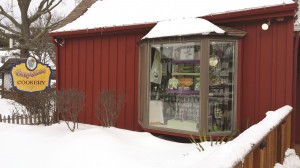 With nearly 70 percent of adult Americans overweight or obese and the weight loss industry valued at around $60 million in 2014, Lane points out that there is a major opportunity for kitchenware retailers to get on board with educating their customers and garner a portion of the weight loss market. She spoke to 200 members of Gourmet Catalog & Buying Group in Atlanta at AmericasMart this January on the topic of how retailers can position themselves to become a valuable resource to help communities achieve healthy lifestyle goals.
With nearly 70 percent of adult Americans overweight or obese and the weight loss industry valued at around $60 million in 2014, Lane points out that there is a major opportunity for kitchenware retailers to get on board with educating their customers and garner a portion of the weight loss market. She spoke to 200 members of Gourmet Catalog & Buying Group in Atlanta at AmericasMart this January on the topic of how retailers can position themselves to become a valuable resource to help communities achieve healthy lifestyle goals.
Fellow retailers can do so very simply, Lane says, just by adding in the healthy eating mantra and teaching customers and staff to look at products through an alternative lens. A SodaStream can be used to make sparkling water with muddled lemon added to replace a favorite cocktail or soda and add more water to the diet at the same time, for example. If a customer is considering a Silpat for cookies, let them know about healthy snacks they can make with it too — like chocolate covered oatmeal and Craisins for a preservative-free treat. Gray Goose Cookery carries Dizzy Pig BBQ rubs and Ariston infused olive oils, both of which are healthy ways to add flavor to a meal while lowering fat.
“It doesn’t have to be complicated. Simple healthy foods are where we should be going with this initiative in our industry,” says Lane. “There’s a huge opportunity for us to grow our businesses. We just need to be able to suggest it and then it’ll become practice for people; they’ll be thinking about it more, and it will make sense to them.”
This story was originally published in the March 2015 issue of Kitchenware News, a publication of Oser Communications Group.
Kitchenware Outfitters: The Place Where Everybody Knows Your Name
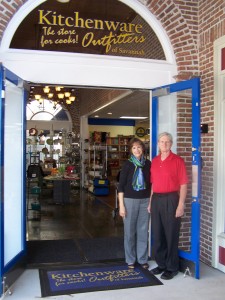 How does a kitchenware store go from being just another retail shop to the place where everybody knows your name? For Kitchenware Outfitters in Savannah, Georgia, it involves a decade-long presence of quality products, with the exceptional customer service to back it up. It certainly doesn’t hurt to offer cooking classes, in-store food demos, free soup, charity knife sharpening events, cookouts, a quarterly newsletter and an active social media presence.
How does a kitchenware store go from being just another retail shop to the place where everybody knows your name? For Kitchenware Outfitters in Savannah, Georgia, it involves a decade-long presence of quality products, with the exceptional customer service to back it up. It certainly doesn’t hurt to offer cooking classes, in-store food demos, free soup, charity knife sharpening events, cookouts, a quarterly newsletter and an active social media presence.
When husband and wife David and Barbara Freeman discovered they were going to be a part of corporate reorganizations, they looked for a business opportunity that would allow them to remain in Savannah. David hoped for an ice cream shop, but Barbara thought about her waistline and thought it might be better to use her experience as the chief financial officer for Le Creuset. David came from the world of corporate sales, but a retail kitchenware store was a definite transition for both of them.
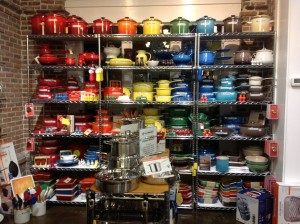 At Barbara’s behest, David got a job at Home Depot to see if retail would be a good fit, and they began to work on their business plan. Barbara took care of the financial portion, and David used his degree in public relations and advertising to work on the marketing.
At Barbara’s behest, David got a job at Home Depot to see if retail would be a good fit, and they began to work on their business plan. Barbara took care of the financial portion, and David used his degree in public relations and advertising to work on the marketing.
Kitchenware Outfitters opened in March 2004, about six months after the Freemans began exploring their venture. The initial five-year goal was exceeded within the first two years. Three years after opening, the store had doubled in size, expanding from 2,000 square feet to 4,000 in 2007. In 2011, another 300 square feet were added.
Located in the Twelve Oaks Shopping Center in midtown Savannah, the store sees a wide range of local customers. From the very beginning, Barbara and David sought to achieve a welcoming atmosphere where any customer could shop and find quality products – no matter their budget.
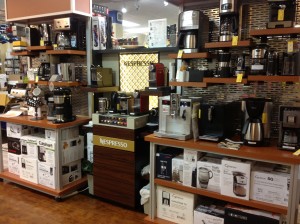 “When we were first writing up the business plan for our store, one of the things my husband thought about was the TV series ‘Cheers,’” says Barbara. “We wanted that sort of atmosphere in our store, where people would walk in and be greeted and feel good about being there. We’re always trying to come up with different ideas that are going to make people feel good about being in the store.”
“When we were first writing up the business plan for our store, one of the things my husband thought about was the TV series ‘Cheers,’” says Barbara. “We wanted that sort of atmosphere in our store, where people would walk in and be greeted and feel good about being there. We’re always trying to come up with different ideas that are going to make people feel good about being in the store.”
The Freemans looked at larger national kitchenware retailers like Williams-Sonoma and Sur La Table for inspiration, taking away from Williams-Sonoma the need for high-end products. From Sur La Table they adopted the “everyone-is-welcome” environment, along with a variety of price points.
“We wanted to make sure that everyone felt comfortable shopping with us. People who have trophy kitchens that want to have the best of the best and people that cannot afford to spend as much on their kitchens are equally important to us,” says Barbara. “We want to be able to serve all our customers, no matter what their budget, and provide them what they need for their kitchens. We try to select the best products at each price point, so regardless of what you’re able to spend on your kitchen, you know you’re getting the best value for your money.”
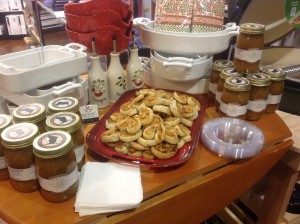 Another important step along the way to establishing Kitchenware Outfitters was a trip to Dallas for the Total Home & Gift Market in January, just before the store was to open. It was there that David met the late Joel McLendon through their Gourmet Catalog membership. As the founder of The McLendon Company, Joel helped more than 500 people open their own retail businesses since the 1950s.
Another important step along the way to establishing Kitchenware Outfitters was a trip to Dallas for the Total Home & Gift Market in January, just before the store was to open. It was there that David met the late Joel McLendon through their Gourmet Catalog membership. As the founder of The McLendon Company, Joel helped more than 500 people open their own retail businesses since the 1950s.
“He was like the grandfather of kitchenware specialty gourmet stores, and he would take new retailers – or new want-to-be retailers – and take them through the whole process of what you need in terms of flat wall, cash wrap materials – just those basic items that you don’t think about. You get excited about the inventory and what you can sell, but you don’t think about the structure that has to sit underneath that, and Joel had that down to a science,” says Barbara. “He helped us build the very structure of our store and had some very good core vendors that he represented. We gradually learned all the other sales reps in the industry and the vendors that they represented, and we were able to branch out from that.”
When envisioning the store, Barbara also took away expert advice from her days at Le Creuset. She recalled that the president of the company at the time had advised her that in his experience working with retailers, those who offered in-store cooking classes tended to have better business, because the classes are an excellent way to showcase products. Kitchenware Outfitters has a kitchen area where classes are offered every week. Local restaurant chefs, caterers, cookbook authors and professional cooking instructors teach the classes on a variety of subjects, from specific skills like braising to general topics like making an Italian dinner.
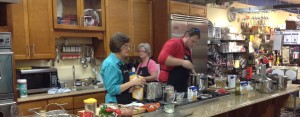 “They’re using this fabulous cookware, and they may or may not have it in their home, but they can definitely see the difference once they’re using it in front of the customers, and most of the time they’re commenting on the cookware,” Barbara says of the instructors. “They can talk about how well a product is performing, or how it enhances what you’re doing or makes it easier. We sell a lot of products through our cooking classes because people see them in action.”
“They’re using this fabulous cookware, and they may or may not have it in their home, but they can definitely see the difference once they’re using it in front of the customers, and most of the time they’re commenting on the cookware,” Barbara says of the instructors. “They can talk about how well a product is performing, or how it enhances what you’re doing or makes it easier. We sell a lot of products through our cooking classes because people see them in action.”
Cooking classes aren’t the only way Kitchenware Outfitters is allowing customers to see products in action. The store offers complimentary Soup Wednesdays, held during the first three weeks of December. What began as a way to make customers feel good about being in the store during the busy holiday season has also become an opportunity to showcase a variety of products. Soup is made in stockpots, which are sold in the store: possibly All-Clad, Le Creuset or Swiss Diamond. Customers are offered sparkling water made with a SodaStream or regular tap water filtered with a Mavea water filter. Bread is made from scratch with an Emile Henry bread cloche and a Zojirushi bread machine, and butter is provided in a Butter Bell Crock.
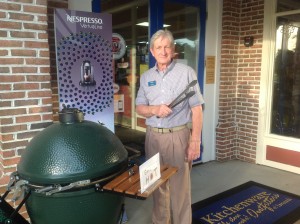 Because Savannah weather is suitable for nearly year-round barbecues, cookouts are regularly held at Kitchenware Outfitters, prominently featuring the Big Green Egg. David typically takes the helm at these free events, spotlighting the barbecue tools and accessories which make up about 20 percent of Kitchenware Outfitters’ sales. Gadgets are the other top seller for the store, comprising about 18 percent of sales.
Because Savannah weather is suitable for nearly year-round barbecues, cookouts are regularly held at Kitchenware Outfitters, prominently featuring the Big Green Egg. David typically takes the helm at these free events, spotlighting the barbecue tools and accessories which make up about 20 percent of Kitchenware Outfitters’ sales. Gadgets are the other top seller for the store, comprising about 18 percent of sales.
“People want tools that are very functional, and they definitely want them to work as they’re touted to work,” says Barbara. “The Garlic Twist we’ve been selling now for years, and to me that’s a great little gadget because it really does a wonderful job with the garlic. Garlic is something that can be extremely messy to deal with. You can chop it with a knife, but it’s not easy because it’s so sticky – there’s a case where a gadget that has a single purpose is really, really effective.”
The heart of the Kitchenware Outfitters philosophy is having quality products that truly work and leave the customer satisfied, along with providing customer service that ensures satisfaction. In addition to six employees, Barbara and David work full time at the store, taking a very hands-on approach to their mission. It’s not enough to simply sell a customer a product, they say. That customer must also walk away knowing how to get the most use out of that product.
“We try to train our staff to really talk with the customer to find out what it is they need. A lot of times when customers come into a store – any store – they have an idea what they need, but they may have not thought through all of it and may not understand the products that are out there that could fulfill their need,” says Barbara. “We like for our employees to really talk with the customer to make sure what it is they’re getting is indeed what they need, and then making sure they have everything they need to make that product work effectively.”
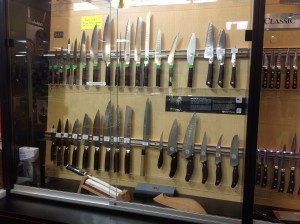 Barbara uses the example of a knife. Along with that knife, the customer needs to know how to properly clean it, how to store it and what surfaces to use it on in order to achieve a lifetime of use. The Kitchenware Outfitters approach is closer to neighborly advice than high-pressure sales.
Barbara uses the example of a knife. Along with that knife, the customer needs to know how to properly clean it, how to store it and what surfaces to use it on in order to achieve a lifetime of use. The Kitchenware Outfitters approach is closer to neighborly advice than high-pressure sales.
Driving this point home are the quarterly knife sharpening events held at the store from which the proceeds are donated to charity. In the past, charities such as Meals On Wheels and Ronald McDonald House have been recipients. Donations have also benefited the culinary program at a local technical school. Most recently, proceeds went to the Wounded Warrior Project.
“We’re always trying to do something to give back to the community,” says Barbara. “We all live here, we all work here, and we need to be responsible.”
This story was originally published in the February 2015 issue of Kitchenware News, a publication of Oser Communications Group.
Gygi: Up From the Ashes and Burning Bright in Salt Lake City
By Lorrie Baumann
Brad McDonald, General Manager for Gygi, is toying with the idea of someday opening a second location somewhere in metropolitan Phoenix. That seems only fitting since his Salt Lake City kitchen store has already risen from the ashes once, so a Phoenix is clearly something these folks know about.
Gygi was founded by Orson H. Gygi, McDonald’s grandfather, in 1945, when the American economy was just getting back on its feet after World War II. Gygi had been a sales manager for a restaurant supply company and had decided to start out on his own, going from door-to-door at restaurants and selling from his car trunk.
“He built everything we have today with a lot of hard work and dedication,” says McDonald. “My grandfather had very little inventory but he built his business by sacrificing a lot for the business and his family. He lived a frugal lifestyle and lived by the philosophy that if we can’t pay cash for it, we don’t need it.”
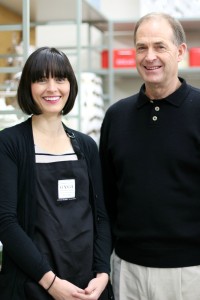 Orson Gygi gradually built up his modest door-to-door business to open a wholesale restaurant supply store where, eventually, his four sons joined. Two of them were happy doing outside sales to the restaurants and the other two wanted to convert the business into a cash-and-carry store. So, they did both. By taking about 5,000 square feet of the 15,000 square foot warehouse they turned the store into a cash-and-carry retail store open to the public, while continuing to deliver wholesale equipment to restaurants.
Orson Gygi gradually built up his modest door-to-door business to open a wholesale restaurant supply store where, eventually, his four sons joined. Two of them were happy doing outside sales to the restaurants and the other two wanted to convert the business into a cash-and-carry store. So, they did both. By taking about 5,000 square feet of the 15,000 square foot warehouse they turned the store into a cash-and-carry retail store open to the public, while continuing to deliver wholesale equipment to restaurants.
Then came the fire, in March of 1998. “At that point it caused us to give some thought about the future of the business,” McDonald says. “We had entered a crossroads of whether to sell the business, or rebuild on the same property and turn the wholesale restaurant supply store to retail kitchenware sales. We decided on the latter, and I was elected to become Gygi’s new general manager.”
Today the store occupies about 40,000 square feet, with about 30,000 square feet of that a warehouse styled retail space where they sell everything to do with the preparation of food. Although the business still has some restaurant customers, its main focus is now supplies and education for home cooks.
The retail floor offers basically everything you can think of for culinary purposes ranging from disposable tableware to specialty food items not available in local grocery stores. Other items such as, specialty ingredients, emulsions and flavorings and specialty spices are all available for one to peruse throughout the store.
“At one time, we were the only place you could get anything in any quantity. We have some specialty ingredients, such as, flours and sugars, and we also supply a lot of chocolate, selling almost 750,000 pounds of chocolate a year out of the store alone,” McDonald says with a smile. “And that’s only accounting for the people who are using it as an ingredient.”
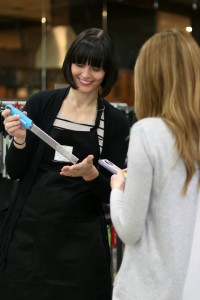 Gygi’s buying strategy is to try to pick out only the best items from every line in the store rather than carrying the complete lines of all the brands that are represented.
Gygi’s buying strategy is to try to pick out only the best items from every line in the store rather than carrying the complete lines of all the brands that are represented.
“We select top brands and focus on what those top brands are best at doing, we then focus on that top item,” McDonald says. “Every manufacturer has its areas where they kind of hang their hat, and then they fill out the line with other products. At Gygi, we try to pick out those best products from every line.”
Among the 8,000 to 10,000 product lines carried in the store, Swiss Diamond, All-Clad, Le Creuset and WUSTHOF are a few of the most popular brands. Joseph Joseph cutting boards do very well, and so do John Boos cutting blocks.
“Fat Daddio’s is a pan line that is very popular among our customers. It’s a great pan line that bakes beautiful cakes. We’ve actually converted a lot of our own baking pans to the Fat Daddio’s line,” McDonald says.
However, it’s not only McDonald who works long hours to see his grandfather’s legacy live on; fourth-generation family member Heather Smith has been working in the store full time since 2000.
“I worked part time through high school, and soon realized it was a pretty cool place. I then moved out on my own and started cooking, that’s when working at Gygi turned from a career to a hobby,” Smith says. “I still don’t look at it as a job. It’s more of a passion, maybe even a lifestyle.” Today, she’s a mother of three: eight-year-old daughter Saige, six-year-old son Milo, and 20-month-old son Jep. “They’re my first priority, but Gygi is part of me. I enjoy it,” she says.
While job titles at the Orson Gygi Company are family-flexible, Smith is the company’s Culinary Director, managing a lively schedule of cooking classes.
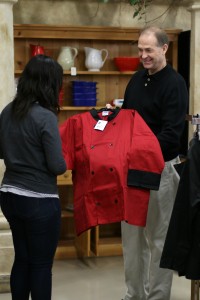 “Utah’s demographic is a changing atmosphere and it’s part of my job to see those changes in the classes. A lot of people are looking to cook healthier, rather than relying on traditional casseroles,” she says. “Taking a family out can be expensive, so with Utah’s larger families, people would rather entertain in their own homes, and they want to serve something different from the traditional church casserole. We’ve also started catering to our customers who aren’t sure what a church casserole is. We’re making Utah more of a foodie state than it ever was.”
“Utah’s demographic is a changing atmosphere and it’s part of my job to see those changes in the classes. A lot of people are looking to cook healthier, rather than relying on traditional casseroles,” she says. “Taking a family out can be expensive, so with Utah’s larger families, people would rather entertain in their own homes, and they want to serve something different from the traditional church casserole. We’ve also started catering to our customers who aren’t sure what a church casserole is. We’re making Utah more of a foodie state than it ever was.”
The typical hands-on class lasts around 2.5 hours with about 12 to 14 students, of whom around 20 percent are men who are just learning to cook. Most of the teachers are chefs recruited from Utah’s own local community, such as instructors from the culinary programs, chefs from local restaurants, and some are even local food bloggers. During the classes, students cook right along with the instructor chef. At the end the experience, they’ll sit down around a large table and have a family-style meal with the food they’ve just created.
“We have people who take these classes strictly for educational purposes and those who take them for social purposes as well. It’s an opportunity to sit down and have a nice meal with somebody,” McDonald says.
Gygi also has a theater-style demonstration kitchen that seats around 50, and the occasional class is still taught there, but the cooking school has really found its niche with the hands-on classes, he adds. The culinary center also functions as a laboratory in which new products are tested before they’re offered for sale. “It’s amazing how often we see a product that looks great, but then we don’t feel comfortable with the quality or the wear and tear of the product, in which case we won’t put it out on our shelves until we’ve tested it,” McDonald says. “We basically stand behind the products for life. We warrant customer satisfaction because the products that we do have are good-quality products. We learned a long time ago that the more risk you take away from the consumer, the more willing they are to buy, so we try to take that risk away for our customers.”
That philosophy extends to a recent major investment in the store’s e-commerce website. It’s currently generating about five to eight percent of total sales, but McDonald is hoping to grow it to become an equal or greater portion of the business. To that end, he hired half a dozen new people to ramp up the online operation, and a few months into the project, revenues are growing fast.
“We’re projecting that it could take three years to build the e-commerce business to equal the store’s sales, but the team feels that projected time allowance is overly generous, and they plan to reach that point much sooner,” he says. “We just hope that we can take people from large cities and hope that they’ll feel as comfortable as the people who come into our store. That’s our challenge – to personalize it.”
This story was originally published in the February 2015 issue of Kitchenware News, a publication of Oser Communications Group.
Online Presence Critical for Bridal Registry
Bridal and gift registries can be a profit center for retailers who are able to secure the all important word-of-mouth referral. However, establishing a well regarded and much-talked-about reputation is of course the difficult part. The key to this conundrum lies somewhere between catering to modern conveniences with a strong online presence and standing out from the big box stores with superior customer service.
The last 20 years have seen digital communication become an increasingly vital aspect to our lives. The area of weddings and all things bridal is no exception. Modern brides are selecting their wedding favors and pinning them on Pinterest for the world to see before they have even met their groom-to-be. The engagement is announced on Facebook rather than the local paper, and a dedicated website will most surely soon follow. When a couple goes to register for their bridal shower and wedding gifts they expect it to be as easy for their guests as clicking a link from the personal wedding website created by the couple for the special occasion.
“We did a manual paper system years and years ago when we first started. We’ve been doing registries for 25 years, and it’s all online now,” says Doug Huemoeller of Kitchen Window in Minneapolis, Minnesota. “We’ve partnered with a company called Your Gift Registry, and we use their digital interface for that, where customers can go to our website and then access those registry items .… Having that partner for that interface is the most important thing, so that people can have easy access.”
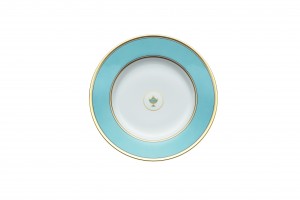
Richard Ginori Contessa Indaco Dinner Plate
Your Gift Registry offers wedding and gift registry solutions to independent retailers by handling the data entry and online portion of the gift registry process after customers have selected items in person in the store. Guests may then access the list online to browse or make purchases that are fulfilled through the retailer. Such access is especially important when factors like out-of- state weddings are taken into consideration. In 2013, destinations weddings accounted for 24 percent of all weddings, according to TheKnot.com 2013 Real Weddings Study.
“Nowadays we have people who grew up here in Greensboro, they’re getting married in Bermuda, their parents are all over everywhere; it’s real interesting because of the way we have to do contacts and keep up,” says Martha Nading, who has been doing gift registries for the last 29 years at her kitchenware store, The Extra Ingredient, in Greensboro, North Carolina. “I hired Your Gift Registry instead of having to hire somebody right here on the spot in my location to do all that work for me because there is a lot of data entry now that it’s online.”
Beyond leveling the playing field by establishing an online presence, dedicated customer service that reflects the intimacy of the event will allow independent retailers to stand apart from big box competition. Having couples schedule an appointment for registry services will permit time to ensure that a staff member is able to show personalized attention. Providing special training to employees on the registry system within your store will allow them to become bridal consultants capable of providing knowledgeable suggestions and seeing the process through from start to finish and follow-up.
Simple accommodations retailers can provide, like gift wrapping, add up to a big impact for the customer. At The Extra Ingredient, customers are able to complete the process with at their convenience, for instance, beginning the registry by selecting dinnerware and tabletop items and then coming back to select cookware and cutlery at another date, if needed. Kitchen Window offers a hold and delivery option for guests in which all gifts are held until a specified date and then delivered to the desired location in one batch. Couples who are concerned for the environment can also choose to have their preference for unwrapped gifts relayed to guests. Anything retailers can do to meet the busy couple at a convenience level will surely build up a strong impression leading to future referrals.
“For us, we don’t just give our guests a scanner. We do registry by appointment, we have an associate who goes around either with the person or with the couple and provides them with information about registry and things to look at or to consider for their assortment,” says Huemoeller. “That person sits down with the couple for a few minutes to find out a little about them. Then for registering with us we do offer the person or the couple a free cooking class, because, again, we want to build that connection with them.”
Registry incentives can be an opportunity for retailers to stand out from the competition at little cost. The Extra Ingredient opts to give the couple their very first registry gift. Other possible incentives might include things like offering a percentage discount for a certain period of time after the event or a free product once a specified amount has been spent in the store towards that particular registry.
Whether retailers choose to offer an incentive or not, their inventory must reflect all the essential areas of registry that brides and grooms will be looking for. A strong selection of small electrics, cutlery, cookware, bakeware, gadgets, and tabletop are crucial to ensuring that the couple does not have to register anywhere else to complete their kitchenware needs. A tabletop brand that offers a classic set of porcelain or stoneware dishes is also critical. The Extra Ingredient has found Vietri and Juliska to do well as registry brands. A formal option, like Richard Ginori, might be nice to have on hand as well if you know your clientele is likely to select such a set.
A kitchenware store’s inventory selection and customer service will ultimately be what leads to a satisfactory bridal registry experience that translates to word-of-mouth referrals. One good bride with a few showers where friends at similar stages in their lives see the beautifully wrapped gifts and how pleased she is can be all it takes. Getting in on the action may take time, but is very good business when done successfully.
“Gourmet Catalog has found bridal registry to be an important part of the independent retailer’s business. Stores who don’t participate in a registry program are missing out on a large market of customers, especially younger generations,” says Janis Johnson, President and Founder of Gourmet Catalog & Buying Group. “Once a customer registers with your store, they are likely to come back for future purchases. A registry program can create that special, enjoyable experience that remains a memory for a couple, forever tying them to the store. It’s a great way to build a new customer base and gauge what a specific generation is looking for when it comes to kitchenware items.”
This story was originally published in the February 2015 issue of Kitchenware News, a publication of Oser Communications Group.

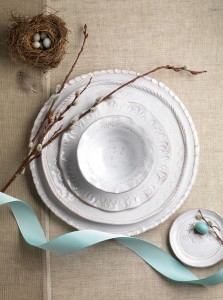
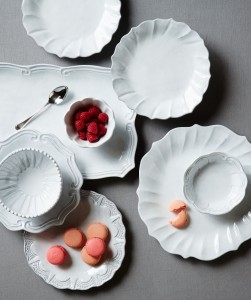
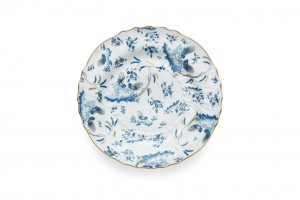
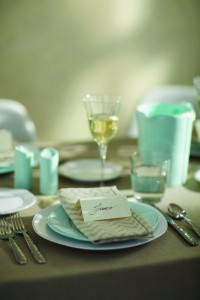

You must be logged in to post a comment.